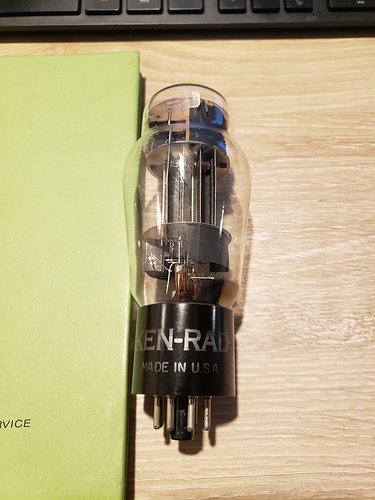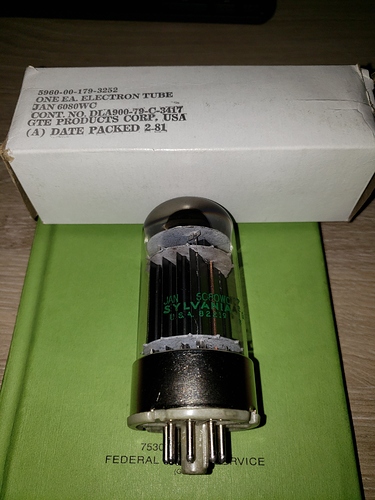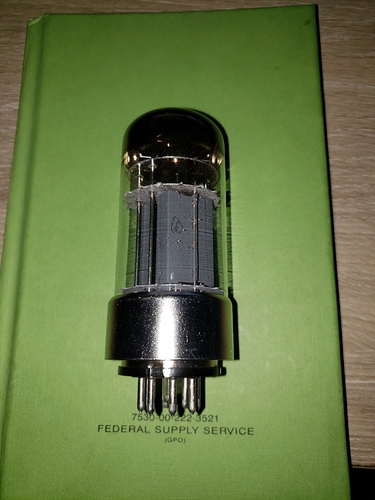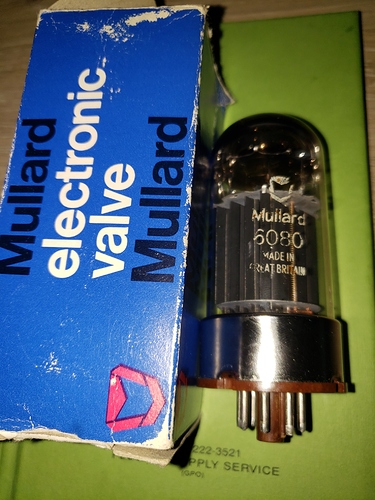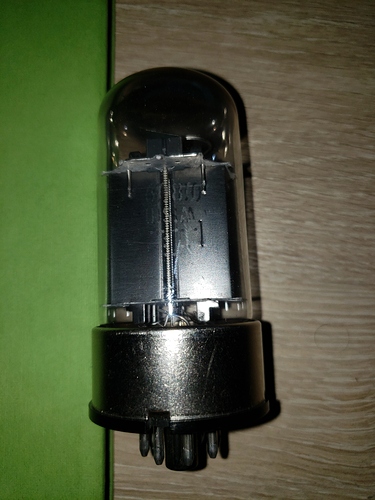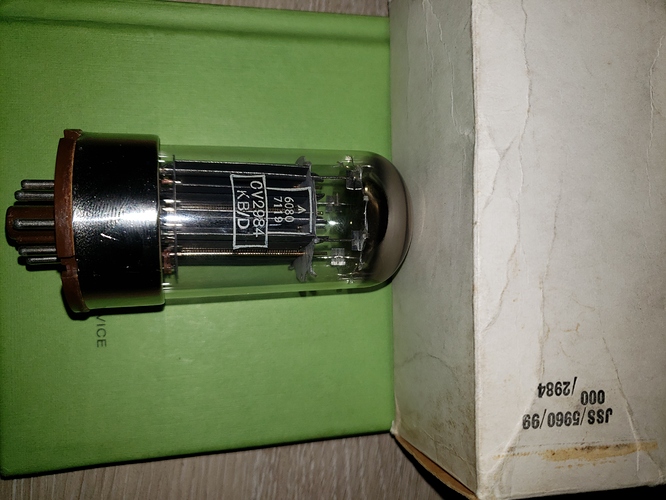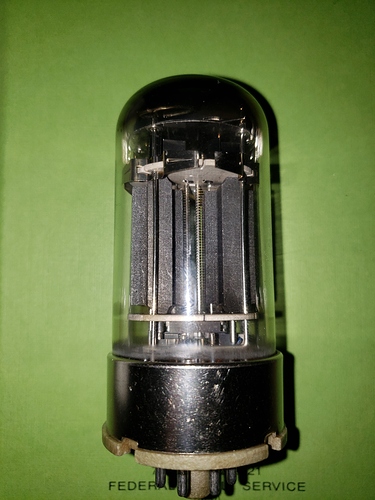So for power tubes on the BHC, you can use a 6080, 6AS7, 7236, 5998, 421a, 6N13S, 6H13C. I own a few of these tubes, so I wanted to share my impressions.
Soviet Era Svetlana “Winged C” 6H13C Tube
This is a decent tube considering it is much lower in price to it’s counterpart U.S. Made 6AS7G tubes. These are easily identifiable by the Soviet factory stamped marking “OTK” on the glass somewhere. These are referred to as the winged C based on the logo (seen on the top red portion of the box). These tubes have a nice soundstage (not too big, not too narrow). These tubes present the bass in an authoritative manner, but sadly it is sort of a “one note” midbass thump. The mids sound like they get lost somewhere in the upper regions right before the transition into the treble. The treble on this tube is extended, but very grainy and it has some glare. Still, for $13 this is a good price to performance option for many.
Ken-Rad 6AS7G Tube
So the long and short of it is that RCA, Sylvania, and GE manufactured the majority of 6AS7G tubes. The harder to find Tung-Sol or Chatham (purchased by Tung-Sol) 6AS7G or even the rarer 5998 tubes are the only ones that sound different. These have a wide soundatage and a very inoffensive and linear sound. Another good price to performance option. In my experience, these do have a tendency to be microphonic.
GE 6AS7G Tube
See the above.
Sylvania 6080WC Tube
These are a more rugged militarized 6080. They don’t really stand out much. This tube is way more forward and aggressive sounding than the stock GE 6080. The bass isn’t so good and the mids and treble are way too aggressive and have glare that is easily distracting to the rest of the sound signature frequencies.
Tung-Sol 7236 Tube
This is another aggressive sounding tube. It has a higher gain than 6080, 6AS7G or 6H13C tubes. The soundstage is sort of claustrophobic and narrow. The tonality sounds right though, at least in the bass and mids. The treble is very airy, but can become overly forward when paired with the wrong preamp tubes. With the right preamp tube however, the 7236 can provide an endless amount of detail, energy, and fun.
Mullard 6080 Tube
This is an excellent 6080, one of the best you can get. Bass is just right and has nice layering and detail. The mids…superb. I don’t think any tubes that I’ve heard other than the Bendix 6080WB even come close. Mids are detailed, but not overly so. They transition into the treble with ease. The treble is very slightly subdued, but still tonally correct to my ears. There is a tiny bit of air at the top end that kind of holds the treble together. Full disclosure…I’m a bit of a Mullard fanboy, lol.
Raytheon 6080WB Tube
This is a nice and affordable upgrade to the stock GE 6080. It has more slam in the bass, but it can get overly thick when paired with the wrong preamp tube. It has a upper bass lower mid forward sounding signature. The treble is sort of subdued and takes a step back on this tube…but I feel it is better sounding than the treble on the stock GE 6080.
GE 6080 Tube (stock BHC tube)
If you own a BHC, chances are this tube is what came stock. It is the textbook definition of “a jack of all trades, but master of none”. But, it is very clean and natural sounding. It also has the lowest microphonics of any of my power tubes.
Mullard CV2984 Tube
This is the British Military version of the Mullard 6080. The main difference is that this tube should hypothetically last much longer than the Mullard 6080. They sound remarkably similar. The differences being that this CV2984 seems to have a more punchy bass and wider soundstage.
Bendix 6080WB Tube
I don’t even know where to start with this tube? It slightly beats out my Mullard CV2984 as my favorite power tube. Bendix made these tubes for the U.S. Navy, specifically for Nuclear related tasks and for highly sensitive communication related tasks. The tube is much heavier than other 6080 tubes. This is because it has dense graphite plates (only 6080 with graphite plates) and additional support rods and clips. The sound is very linear and balanced. The bass is the fullest sounding of all the power tubes I’ve heard. Truly breathtaking to hear such tonally correct and detailed bass from a tube. The transition into the mids is effortless and the mids have a velvety character to them.. very pleasing. The transition into the treble is again very effortless. The treble is very balanced between smooth, yet detailed. There may be the tiniest bit less air up top, but that is because the rest of the treble range beneath it is remarkably full with no grain or glare. Word to the wise though…these tubes do not come cheap. They usually range from $175 to above $1,000.

